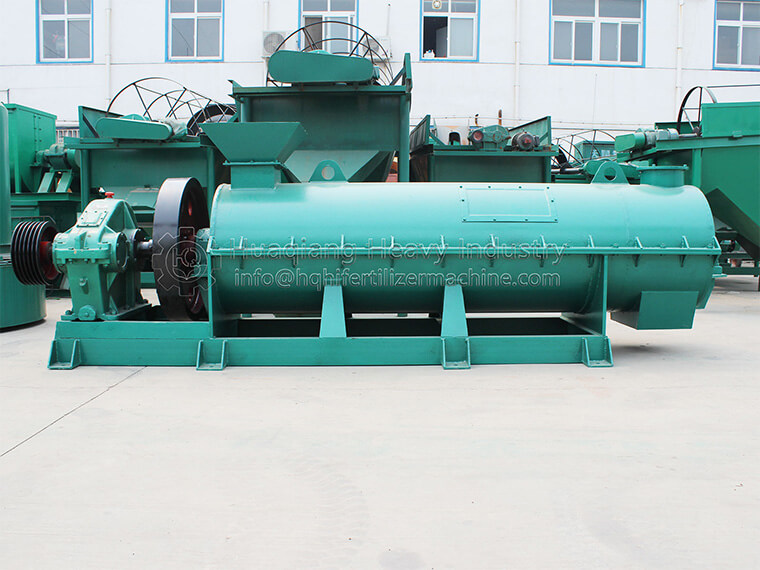Roller extrusion granulator is an improved product of the new technology of international organic fertilizer granulator. The machine is equipped with a machine touch assembly of the pre-continuous feeder and the forced feeding screw feeding hopper connected to the feeding system, ensuring the continuous feeding, abundance and symmetry, which is a crucial step. The uniform arc groove carved on the pair rolls is beneficial to the material biting into the roll, resulting in the arc groove sealing cavity (belt), but also beneficial to the material compaction, reduce the forming pressure of the mechanism and the load of the main engine, and improve the granulation rate.
The key structure of the roller pelletizer is the roller and the mold. The belt and pulley are driven by the motor and passed to the drive shaft by the reducer. The open gear works synchronously with the passive shaft. The material is added from the hopper, extruded by the pair of rollers, demoulded into balls, driven by a pair of chains, and sent to the crushing screen.
Roller extrusion granulator is the key equipment of fertilizer granulation, with advanced technology, reasonable design, compact structure, novel and practical, low energy consumption, with the corresponding equipment, form a small production line, can form a certain continuous production, mechanized production, no drying, room temperature production, product rolling molding capacity, product quality to meet the technical requirements of fertilizer, npk fertilizer granulator is high, medium and low concentration of special organic fertilizer, compound fertilizer industry energy saving and consumption reduction of new products.
The complete set of equipment is compact, scientific and reasonable, advanced technology, energy saving and consumption reduction, no waste discharge, stable operation, reliable operation, convenient maintenance, wide adaptability of raw materials, suitable for compound fertilizer, medicine, chemical, feed and other raw materials granulation, high product granulation rate.








